ARFF Daily News
Published on:
Monday the 10th of February, 2025
Crews recover all 10 victims killed in Bering Air plane crash on ice near Nome
By Anchorage Daily News
Crews on Saturday recovered the remains of all 10 victims from the wreckage of a fatal plane crash on the sea ice near Nome in Western Alaska.
There were no survivors aboard the Cessna Caravan, which was carrying nine passengers and one pilot when it crashed Thursday afternoon traveling from Unalakleet to Nome, the U.S. Coast Guard said Friday.
The Nome Volunteer Fire Department said in an update Saturday, “All ten individuals aboard the Bering Air plane have been officially brought home to Nome.”
The pilot was identified as 34-year-old Chad Antill of Nome. The other victims were Rhone Baumgartner, 46, of Anchorage; Donnell Erickson, 58, of Nome; Andrew Gonzalez, 30, of Wasilla; Kameron Hartvigson, 41, of Anchorage; Ian Hofmann, 45, of Anchorage; Talaluk Katchatag, 34, of Unalakleet; Jadee Moncur, 52, of Eagle River; Carol Mooers, 48, of Unalakleet; and Liane Ryan, 52, of Wasilla, troopers said.
Crews were still working on recovering the aircraft late Saturday, officials said.
Recovery efforts involved aircraft and personnel from multiple agencies, including Alaska State Troopers, the Alaska National Guard and the NTSB, and troopers said Saturday that a team of pararescuemen, two HH-60G Pave Hawk helicopters, a UH-60L Black Hawk based in Nome and an HC-130J Combat King II had worked to recover the remains of the victims.
Jennifer Homendy, chair of the National Transportation Safety Board, told reporters at a briefing Saturday afternoon in Anchorage that responders' first priority was victim recovery, then recovering the wreckage of the aircraft as part of the agency’s investigation into the cause of the crash.
“I want to take a moment and extend our deepest condolences to those who lost loved ones to this terrible tragedy. I also want to extend our deepest sympathies to Alaskans as a whole,” Homendy said. “The NTSB knows that villages like Nome and Alaska aviation are tight-knit communities. So this tragedy affects so many.”
Troopers said their agency had positively identified the victims in Nome, and their bodies would be taken to the State Medical Examiner Office in Anchorage for autopsy. Next of kin had been notified, according to troopers.
Two of those killed, Baumgartner and Hartvigson, had traveled to Unalakleet to service a heat recovery system vital to the community’s water plant, according to the Alaska Native Tribal Health Consortium.
“The loss of these two incredible individuals and everyone else on board the plane will be felt all over Alaska,” David Beveridge, vice president of environmental health and engineering for the organization, said in a statement.
Potentially complicating overall recovery efforts were snow and windy conditions slated to arrive in the region, along with the nature of the crash site, which Homendy said was on an ice floe moving about 5 miles per day. The National Weather Service expected snowfall Saturday night to turn to mixed precipitation and rain Sunday, with wind gusts up to 45 mph.
Coast Guard rescuers found the missing single-engine turboprop plane on the Norton Sound sea ice roughly 34 miles southeast of Nome on Friday, the agency said. A Coast Guard helicopter lowered two rescuers onto the sea ice at the wreckage site and determined no one survived the crash, the Coast Guard said.
The Caravan disappeared from contact less than an hour after taking off just after 2:30 p.m. Thursday. The plane’s last transponder signal came in about 30 miles southeast of Nome, according to the Coast Guard.
The flight path to Nome crosses over Norton Sound.
Radar showed that at about 3:18 p.m. Thursday, “this aircraft experienced some type of event, which caused them to experience a rapid loss in elevation and a rapid loss in speed,” Coast Guard Lt. Cmdr. Benjamin McIntyre-Coble said during a media briefing Friday. “What that event is, I can’t speculate to.”
The agency commenced an immediate search and rescue response, he said. The air and ground search included search and rescue groups from White Mountain and Nome, Alaska State Troopers, the Coast Guard and the Alaska National Guard. The FBI assisted with technical resources to try to locate the missing people via cellphone signal.
Nome Volunteer Fire Department Chief Jim West Jr. said ground search and rescue crews encountered difficult weather conditions that stymied their efforts overnight into Friday.
Bering Air Flight 445 left Unalakleet at 2:37 p.m., according to the airline. Thursday’s flight was a regularly scheduled commuter route, troopers said.
The aircraft was 12 miles offshore at its last known location, the Coast Guard said.
There was no signal from the plane’s emergency beacon, according to a Nome Volunteer Fire Department update Friday.
Nome Mayor John Handeland grew emotional during a Friday news conference as he talked about the impact of the crash on the town, as well as the community’s response.
“I ask that you comfort those who mourn ... hug your people tonight, tightly, and often,” Handeland said.
An NTSB investigator traveled to Nome on Thursday, according to Clint Johnson, the agency’s Alaska chief. Homendy, the NTSB chair, said Saturday that the agency had about nine people on the ground backed by a dozen specialists at their headquarters in Washington, D.C.
“Please know that we’ll work diligently to determine how this happened with the ultimate goal of improving safety in Alaska and across the United States,” Homendy said.
The Nome area experienced freezing rain, light snow and fog on Thursday, according to the National Weather Service. The weather was “challenging” when the search began Thursday, with air temperatures in the area around 3 degrees and water temperatures in the high 20s, McIntyre-Coble said.
Bering Air canceled all flights Friday.
Bering Air, which has operated since 1979, serves 32 villages in Western Alaska from hubs in Nome, Kotzebue and Unalakleet. For most of the villages beyond the hubs, the carrier is the only regular option for travel such as trips to Nome or Anchorage for medical appointments, groceries or school sports tournaments.
“At this time, our thoughts are with the families and loved ones of those affected by this tragedy,” Bering Air wrote on its website. “We recognize the profound loss this has caused, and we want to extend our sincerest condolences to everyone impacted. We remain committed to supporting the authorities and any ongoing efforts to provide assistance.”
The company asked for privacy for everyone involved.
The crash marks the third major civilian aviation incident in the U.S. in just over a week. The midair collision of a commercial jet and a U.S. Army helicopter over the Potomac River killed 67 people on Jan. 29. Six people on board and a person on the ground died when a medical transport plane crashed in Philadelphia on Jan. 31. An F-35 fighter jet crashed at Eielson Air Force Base outside Fairbanks on Jan. 28; the pilot safely ejected.
The Bering Air crash appears to be Alaska’s deadliest since 2013, when 10 people died in Soldotna during takeoff of a Rediske Air Inc. charter carrying two families going bear viewing.
It also appears to be the first fatal crash for Bering Air since 1987, when the pilot of a cargo flight died after a crash near Ambler, according to an NTSB database.
Members of Alaska’s congressional delegation — U.S. Sens. Lisa Murkowski and Dan Sullivan and U.S. Rep. Nick Begich III — posted messages of support as the Bering Air search continued into Friday.
Murkowski, who has flown often on Bering Air during visits to the region, called in to Friday’s press conference to offer her condolences.
“This has been a dark and hard many hours,” Murkowski said. “It’s hard to accept the realities of our loss.”
Gov. Mike Dunleavy, in a post on social media Friday afternoon, said he and his wife, Rose, were “heartbroken by the loss of the 10 people on the Bering Air flight. Our prayers are with the families, friends, and communities mourning this tragedy. We are grateful to the search teams who worked tirelessly to locate the aircraft. I ask all Alaskans to keep those affected in their thoughts and prayers.”
The City of Nome held multifaith prayer vigils throughout the day Friday.
Anchorage Daily News journalists Zaz Hollander and Zachariah Hughes contributed. Material from the Associated Press was also used in this report.
https://www.adn.com/alaska-news/aviation/2025/02/07/radar-showed-rapid-descent-before-bering-air-flight-disappeared-near-nome/
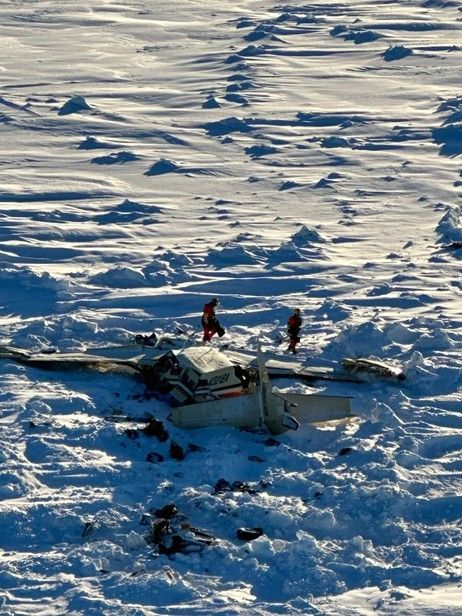
Replacement aircraft flown in for diverted passengers
The Clare Herald
A transatlantic flight diverted to Shannon Airport this afternoon after the crew declared a medical emergency off the South West coast.
United Airlines flight UA-53 was travelling from Zurich, Switzerland to Washington in the US at the time. There were 151 passengers and crew on board the Boeing 767-300(ER) jet.
The flight was about two hours into its journey and about 80kms off the South West coast when the flight crew contacted air traffic controllers in Ireland and declared a medical emergency and requested to divert to Shannon Airport.
Authorities at Shannon were advised of the unscheduled arrival while the National Ambulance Service was also contacted and requested to mobilise resources to meet the flight.
After the flight crew confirmed they would be making an over-weight landing, the airport’s Fire and Rescue Service was alerted and mobilised to standby positions adjacent to the runway in accordance with procedures.
The flight landed safely at 1.35pm and was pursued along the runway by airport fire service vehicles which also accompanied the jet to the terminal where ambulance paramedics and airport staff were also waiting to meet the aircraft.
Fire crews carried out an inspection of the jet’s undercarriage to ensure the braking system hadn’t overheated during the overweight landing. Crews remained with the aircraft for some time after it landed.
Soon after the flight reached the terminal, National Ambulance Service paramedics arrived at the airport. An ambulance and rapid response paramedic vehicle were dispatched to the airport. The ill person, believed to be a crew member, was assessed at treated by paramedics before being removed to University Hospital Limerick.
Meanwhile, after the aircraft had landed, a runway inspection was carried out before flights could depart and land again. Operations at Shannon were not impacted as a result of the emergency landing.
The passengers have since been deboarded and are being cared for in the airport’s transit lounge.
A replacement aircraft and crew are due in Shannon later this afternoon and are expected to take the passengers from flight 53 onto their destination.
A comment is awaited from the airline.
*The passengers continued their journey shortly after 7.30pm this evening.
https://clareherald.com/news/emergency-response/flight-cancelled-after-diverting-to-shannon-with-ill-passenger/
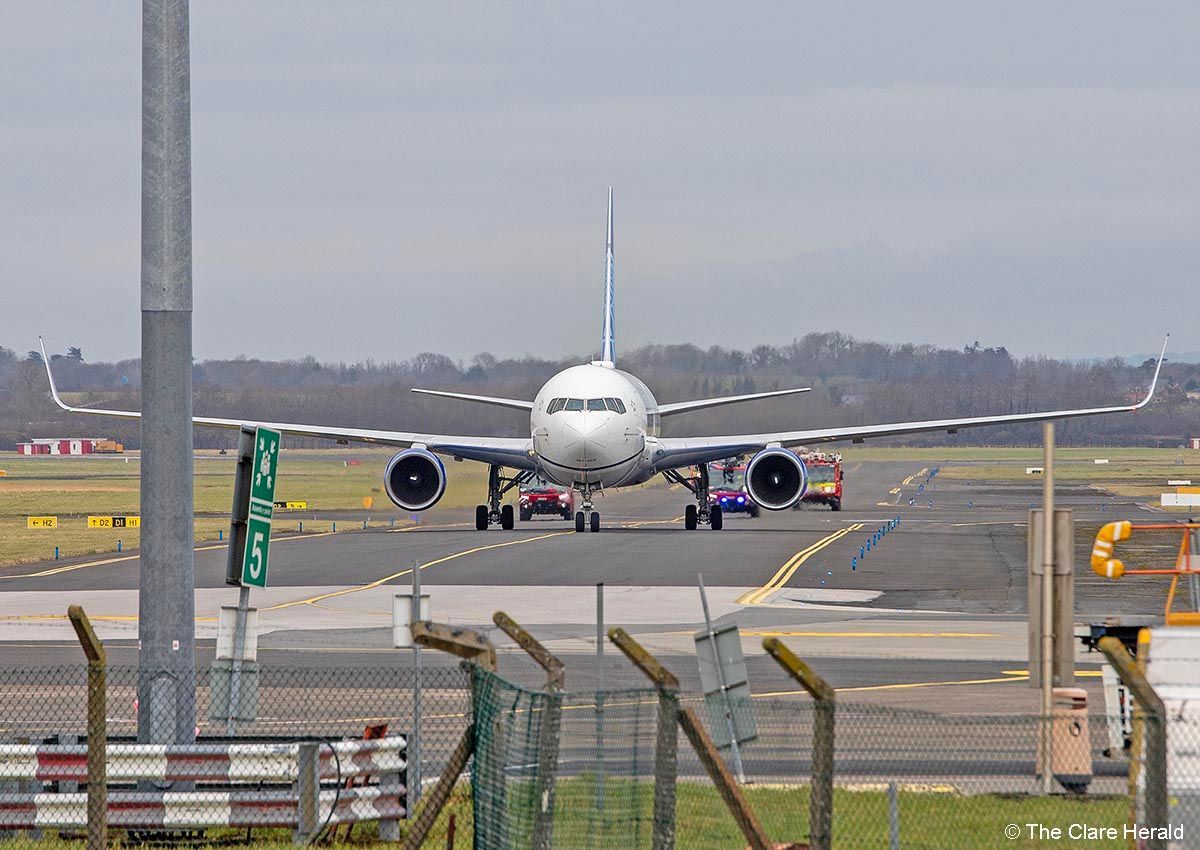
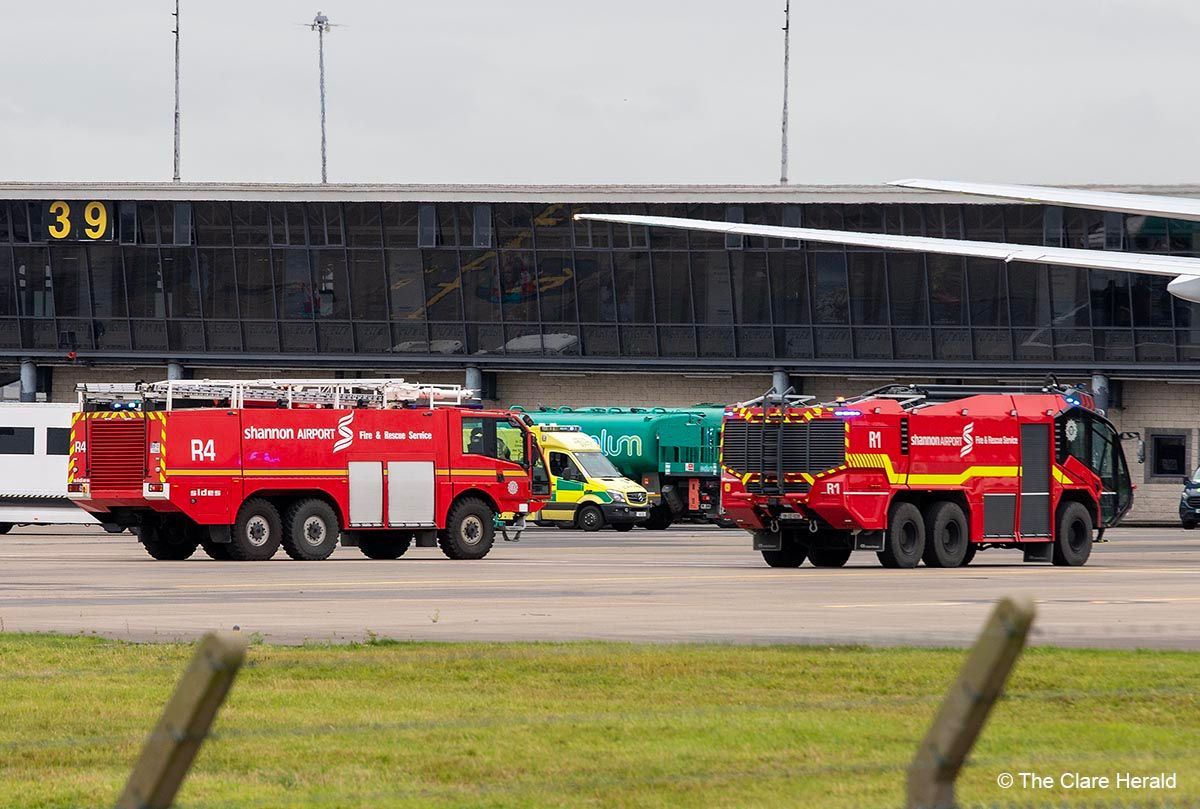
2 survive plane crash near Shafter's Minter Field
The Bakersfield Californian
The two occupants of an aircraft that crashed and was found upside down Sunday on the south side of East Lerdo Highway near Minter Field Airport walked away and declined medical treatment, according to the Kern County Fire Department.
Firefighters who arrived at 11:17 a.m. found the plane with no smoke or fire visible in a vegetable field. The firefighters found there were no other people involved and no immediate hazards, KCFD reported.
"The scene was left in the care of the Shafter Police Department and will be investigated by the FAA," a KCFD news release said.
KCFD noted it's an "all-risk" department, which means it responds to a wide variety of emergencies, including downed aircraft and rescues.
https://www.bakersfield.com/news/2-survive-plane-crash-near-shafters-minter-field/article_4e909e00-e754-11ef-83ac-a78282d505e4.html
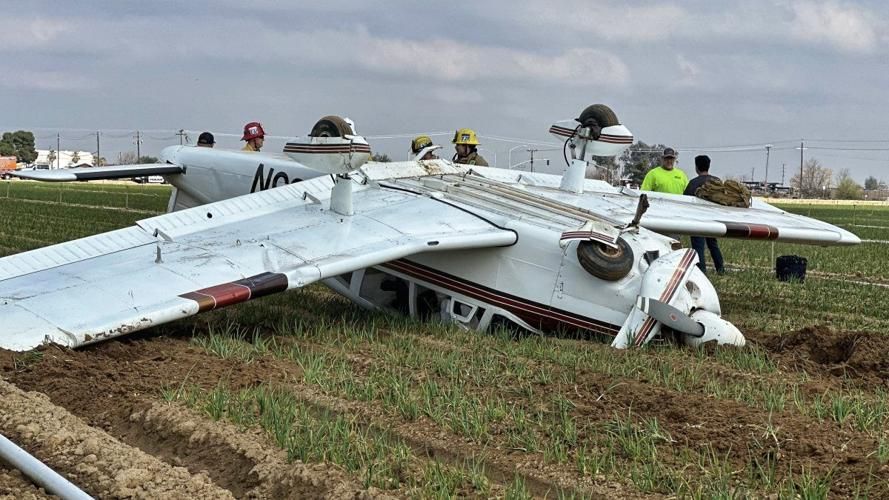
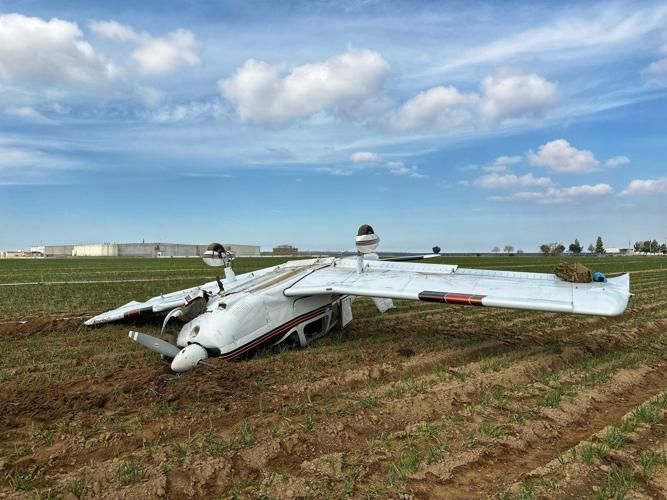
DSU students uninjured in training-flight plane crash near Cheswold
By Shane Brennan - Delaware News Journal
Two Delaware State students were forced to crash-land a small plane at Delaware Airpark near Cheswold on Friday, but they were not hurt in the crash.
The aircraft ran out of fuel while approaching a runway at the airfield, according to the Delaware River and Bay Authority. The plane landed in the grass and flipped over. The training flight was coming from South Carolina.
The two students, one of whom is also on DSU's staff as a certified flight instructor, were evaluated at nearby hospitals and are at home resting, the university said. In a statement, the assistant director of DSU's aviation program, Lt. Col. Jonathan Busch, said they acted in accordance with their training.
https://www.delawareonline.com/story/news/local/2025/02/08/plane-crash-near-cheswold-delaware-state-university-students-uninjured/78359503007/
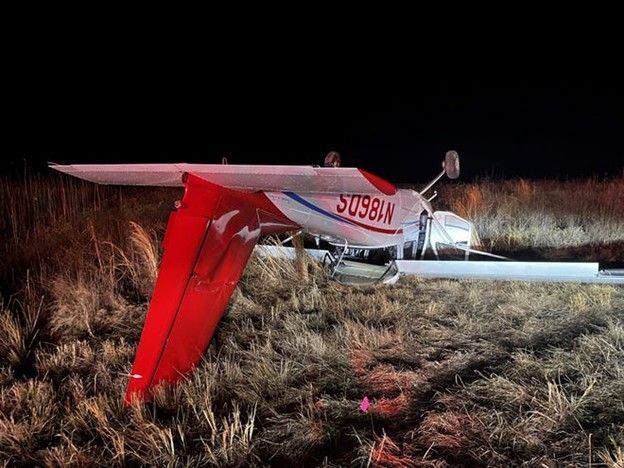
Pilot makes emergency landing at Ocala International Airport without landing gear
by Staff Report
A pilot was able to safely perform an emergency landing at the Ocala International Airport last week, setting his small aircraft down on the runway without functioning landing gear.
Ocala Fire Rescue’s Aircraft Rescue and Fire Fighting crew, as well as several other emergency personnel, responded to the airport along SW 60th Avenue on Friday afternoon.
According to a statement from OFR, a pilot who was operating a small aircraft was forced to perform a “belly landing” on the runway at the airport for unspecified reasons.
The maneuver involved bringing the plane down without using landing gear and landing it on its underside.
The pilot’s “quick thinking” and skill allowed the situation to end with no injuries, according to OFR.
The crash closed the runway at the airport for around an hour and a half on Friday. During that time, operations shifted to the airport’s other runway.
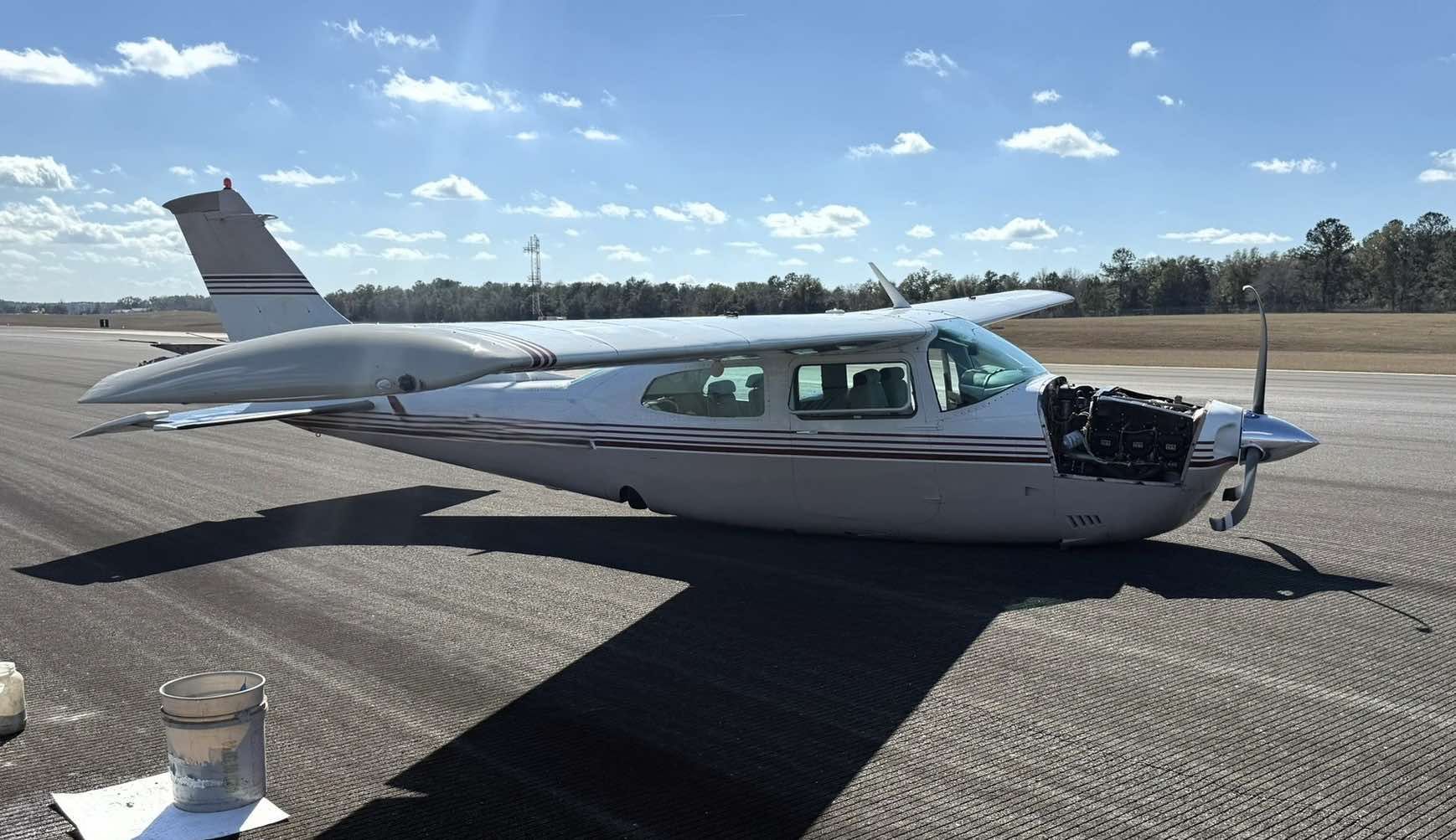
NTSB Prelim: Beech V35B
The Pilot Added That He Was Going To Try To Land In A Field South Of The Airport
Location: Charlottesville, VA Accident Number: ERA25FA103
Date & Time: January 25, 2025, 12:35 Local Registration: N2UZ
Aircraft: Beech V35B Injuries: 1 Fatal
Flight Conducted Under: Part 91: General aviation - Personal
On January 25, 2025, about 1235 eastern standard time, a Beech V35B, N2UZ, was destroyed when it was involved in an accident near Charlottesville, Virginia. The airline transport pilot was fatally injured. The airplane was operated as a Title 14 Code of Federal Regulations Part 91 personal flight.
According to preliminary Federal Aviation Administration air traffic control communication data, the pilot made radio contact with the Charlottesville-Albemarle Airport (CHO) control tower at 1230. He declared an emergency and stated that the airplane was 10 miles south of the airport, at 5,500 ft mean sea level, and had experienced a total loss of engine power. The controller acknowledged the information and offered runway 3 to the pilot; however, at 1233, the pilot reported that the airplane was 3 to 4 miles south of the airport, and he was not going to be able to glide the airplane to the airport. The pilot added that he was going to try to land in a field south of the airport. The pilot subsequently stated that he was attempting to land in a field near a river, and the controller replied that he would send first responders to that location.
No further communications were received from the accident airplane. Review of Automatic Dependent Surveillance-Broadcast (ADS-B) data revealed that the airplane approached the approximate 1,800-ft-long field about 100 knots on a magnetic course about 310°. The airplane overflew the field and collided with trees at the end. A debris path was observed at the end of the snow-covered field, which began with a portion of the inboard left wing and its fuel bladder, imbedded in a tree about 3 ft above the ground. The debris path extended about 175 ft on a magnetic course of 310°. An outboard section of left wing was located about 40 ft along the debris path, followed by the first ground scar 20 ft beyond that. Near the ground scar, outboard sections of both wings were identified. A section of wing was suspended in a tree and was also near the first ground scar, and the left main landing gear was located 20 ft beyond the ground scar. The main wreckage came to rest at the end of the debris path, inverted, and oriented on a north heading.
A postcrash fire consumed a majority of the main wreckage. Although the left main landing gear separated, the right main landing gear remained parallel to the right wing spar, consistent with a gear retracted position. Additionally, the nose landing gear remained attached to the fuselage, inside the gear well. A flap actuator was recovered, and measurement of its arm corresponded to a flaps position of between 0 and 5°. Measurement of the elevator trim actuator corresponded to a 5° tab down (nose-up) position.
The engine was recovered to a storage facility and examined. The propeller remained attached to the engine. All three propeller blades remained attached to the hub and did not exhibit rotational damage. The No. 2 cylinder exhibited impact damage, and the No. 4 cylinder valve cover was melted. The propeller would not rotate by hand. It was noted that only one of the three nuts remained that secured the oil filter mount. The mount was loose against the housing and the other two nuts were not located. The oil sump was subsequently removed to facilitate borescope examination, and only residual oil remained. A crack in the engine case was observed near the camshaft gear. Borescope examination revealed multiple metal fragments near a crankshaft counterweight. Additionally, metal fragments were found in the oil sump and oil filter element.
FMI: www.ntsb.gov
NTSB Final Report: Grumman American Avn. Corp. AA5A
Pilot Attempted To Adjust The Engine Power Settings, But The Engine Power “Went To Low Power And Was Not Responding To Throttle Control Inputs.”
Location: Redstone Arsenal, Alabama Accident Number: ERA23LA286
Date & Time: July 4, 2023, 14:07 Local Registration: N26387
Aircraft: Grumman American Avn. Corp. AA5A Aircraft Damage: Substantial
Defining Event: Powerplant sys/comp malf/fail Injuries: 2 None
Flight Conducted Under: Part 91: General aviation - Personal
Analysis: After takeoff the pilot performed a practice RNAV approach, then climbed to 3,500 ft mean sea level en route to another airport. While at altitude the pilot attempted to adjust the engine power settings, but the engine power “went to low power and was not responding to throttle control inputs.” He declared an emergency and after realizing that the flight was unable to reach a nearby airport, he selected a nearby field with a paved road. After landing on the road, he applied maximum braking, but the left wing impacted a metal pole, resulting in substantial damage to the leading edge of the wing.
Postaccident inspection of the engine compartment revealed the throttle control cable assembly remained attached to the throttle control lever of the fuel injection servo, but the outer cable assembly was not secured in the engine compartment. Thus, movement of the throttle control in the cockpit did not result in movement of the throttle control lever. A clamp, shim, two screws, and two metal self-locking nuts that secured the outer cable assembly were not located, but a washer was found loose in the engine compartment.
The throttle cable was replaced at the airplane’s last annual inspection 8 months earlier; the airplane had been operated for about 15 hours since the annual inspection. Although it is unlikely that the screws used to secure the cable would have sheared or failed, they were not located. Thus, the reason for the outer cable clamping hardware to separate could not be determined from the available evidence.
Probable Cause and Findings: The National Transportation Safety Board determines the probable cause(s) of this accident to be -- The separation of the clamp assembly securing the throttle control cable outer housing, which resulted in the pilot’s inability to control the throttle.
FMI: www.ntsb.gov

Today in History
21 Years ago today: On 10 February 2004 Kish Air flight IRK7170, a Fokker 50, crashed following a loss of control while on approach to Sharjah Airport, United Arab Emirates, killing 43 occupants; 3 survived the accident.
Date: Tuesday 10 February 2004
Time: 11:38
Type: Fokker 50
Owner/operator: Kish Air
Registration: EP-LCA
MSN: 20273
Year of manufacture: 1993
Total airframe hrs: 20466 hours
Cycles: 19845 flights
Engine model: P&W Canada PW125B
Fatalities: Fatalities: 43 / Occupants: 46
Other fatalities: 0
Aircraft damage: Destroyed, written off
Category: Accident
Location: 3 km NW of Sharjah Airport (SHJ) - United Arab Emirates
Phase: Approach
Nature: Passenger - Scheduled
Departure airport: Kish Island Airport (KIH/OIBK)
Destination airport: Sharjah Airport (SHJ/OMSJ)
Confidence Rating: Accident investigation report completed and information captured
Narrative:
Kish Air flight IRK7170, a Fokker 50, crashed following a loss of control while on approach to Sharjah Airport, United Arab Emirates, killing 43 occupants; 3 survived the accident.
A Fokker 50 passenger plane, operated by Kish Air, was destroyed when it crashed near Sharjah Airport (SHJ), United Arab Emirates. All six crew members and 37 of the 40 passengers were killed.
The aircraft was operating as a scheduled flight from Kish Island, Iran to Sharjah, UAE with the captain initially as the pilot flying (PF).
During the cruise and just prior to descent, the captain unexpectedly handed over control of the aircraft to the First Officer prior to the approach to Sharjah. The first officer did not accept this willingly and stated that he was not confident of his ability to conduct a VOR/DME approach into Sharjah. This statement was not consistent with his previous experience and could indicate either a cultural or professional issue. The captain insisted the first officer fly the aircraft and encouraged and instructed him during the approach.
At 11:24 hours local time, the aircraft contacted Dubai Arrivals and was cleared from 9000 ft to 5000 ft and instructed to expect a VOR/DME approach to runway 12 at Sharjah International Airport. At 11:29 hours the aircraft was further cleared to 2500 ft and cleared for the approach. The aircraft was under its own navigation and the daylight conditions were fine with excellent visibility. At 11:35 hours the aircraft was instructed to contact Sharjah Tower and the pilot reported that the aircraft was established on the VOR final approach for runway 12. The Tower cleared IRK7170 to land and advised that the wind was calm.
At that point the aircraft was slightly above the approach profile. The initial speed for the approach was at least 50 kt high at approximately 190 kt with no flap and no landing gear. The aircraft should have been configured with landing gear down and flap 10° during the approach and stabilized at 130 kt prior to the MDA. Approaching the MDA at flight idle setting, the auto-pilot was disengaged and the first Officer called for flap 10 at 186 kt (limiting speed of 180 kt) and flap 25 was selected by the Captain, a setting uncalled for by the Pilot Flying at 183 kt (limiting speed of 160 kt), and the landing gear was called for and selected at approximately 185 kt (limiting speed of 170 kt). The captain then took control of the aircraft and shortly afterwards the ground range selectors were heard by Cockpit Voice Recorder to be lifted and the power levers moved from the flight idle stop into the ground control range.
The left propeller then went to full reverse whilst the right propeller remained in positive pitch within the ground control range. The aircraft descended in an extreme nose low left bank attitude until impact. The aircraft crashed 2.6 nm from the runway onto an unprepared sandy area adjacent to a road and residential buildings. The aircraft broke apart on impact and a fire started immediately.
Cause:
The power levers were moved by a pilot from the flight idle position into the ground control range, which led to an irreversible loss of flight control.
Contributory Causes:
1. By suddenly insisting the First Officer fly the final approach, the pilot in command created an environment, which led to a breakdown of crew resource management processes, the non observance of the operators standard operating procedures and a resultant excessive high approach speed.
2. An attempt to rectify this excessive high approach speed most likely resulted in the non compliance with the Standard Operating Procedures and the movement of the power levers below flight idle.
3. The unmodified version of the Skid Control Unit failed to provide adequate protection at the time of the event.

